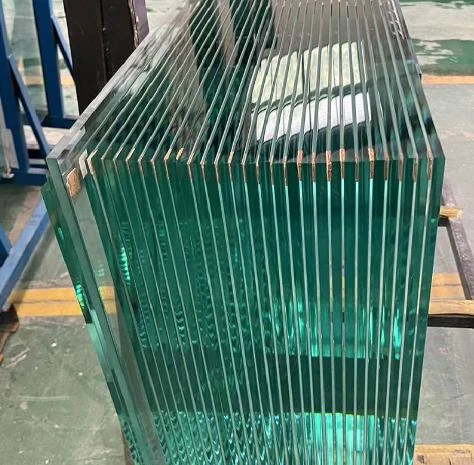The Allure and Versatility of Grey Reflective Glass
In the ever-evolving world of architecture and design, materials play a critical role in shaping the aesthetics and functionality of spaces. Among these materials, grey reflective glass has emerged as a popular choice, captivating architects, designers, and homeowners alike. This versatile material not only enhances the visual appeal of buildings but also provides numerous practical advantages, making it an essential component in modern architecture.
Aesthetic Appeal
Grey reflective glass is celebrated for its sleek and contemporary appearance. Its subtle color tones create a sophisticated ambiance, allowing it to blend seamlessly with various design styles. Whether used in commercial skyscrapers, residential buildings, or interior spaces, grey reflective glass offers a striking aesthetic that enhances the overall visual identity of a structure.
One of the most appealing aspects of this material is its ability to reflect and interact with light. During the day, grey reflective glass captures and mirrors its surroundings, creating a dynamic interplay of colors and textures. This can transform the exterior of a building into a stunning spectacle, as it changes throughout the day with the shifting sunlight. By night, it takes on a different character, often becoming a canvas for ambient lighting, creating a warm and inviting atmosphere.
Functional Benefits
Beyond its aesthetic qualities, grey reflective glass offers several functional benefits that make it a preferred choice for many architects and builders. Firstly, its reflective properties contribute significantly to energy efficiency. The ability to reflect solar energy helps in regulating indoor temperatures, reducing the reliance on artificial heating and cooling systems. This energy-saving characteristic is particularly valuable in hot climates where buildings can become excessively warm due to sunlight exposure.
Additionally, grey reflective glass can enhance privacy without sacrificing natural light. The reflective surface serves to obscure the view from the outside while allowing occupants to enjoy daylight within the space. This quality makes it an ideal choice for buildings situated in densely populated areas or for spaces where privacy is paramount, such as residential homes or office environments.
grey reflective glass
Sustainable Solution
In today’s environmentally conscious world, the need for sustainable building practices is more important than ever. Grey reflective glass is often produced using eco-friendly methods and can be recycled at the end of its life cycle, making it a sustainable option for architects looking to minimize environmental impact. Furthermore, its energy-efficient characteristics contribute to LEED certification, making buildings more attractive to tenants and investors who prioritize sustainability.
Applications and Versatility
The applications of grey reflective glass are extensive, making it an incredibly versatile material. In commercial construction, it is frequently used in curtain walls, storefronts, and office buildings, providing a modern façade that captures attention and reflects the skyline. In residential projects, it can be utilized for windows, sliding doors, and even room dividers, imparting a modern look while ensuring privacy and energy efficiency.
In interior design, grey reflective glass can be found in a variety of applications, including backsplashes, countertops, and decorative panels. Its reflective nature can enhance a room’s sense of space and light, making it a popular choice for contemporary kitchens and bathrooms. Designers often utilize grey reflective glass to create focal points or add depth to interior spaces, demonstrating its adaptability across various design schemes.
Conclusion
In conclusion, grey reflective glass represents the perfect blend of art and functionality. Its aesthetic appeal, energy efficiency, and versatile applications make it a favored choice among architects and designers striving to create modern and sustainable spaces. As the demand for innovative building materials continues to grow, grey reflective glass is poised to remain at the forefront of architectural trends, embodying the essence of contemporary design while meeting the practical needs of the modern world. Whether enhancing the exterior of a skyscraper or serving as a stylish interior feature, grey reflective glass is undeniably a material that can elevate any project it adorns. As we move into a future that increasingly values sustainability and design, the role of grey reflective glass will undoubtedly expand, inspiring creativity and innovation in the realms of architecture and interior design.
 Afrikaans
Afrikaans  Albanian
Albanian  Amharic
Amharic  Arabic
Arabic  Armenian
Armenian  Azerbaijani
Azerbaijani  Basque
Basque  Belarusian
Belarusian  Bengali
Bengali  Bosnian
Bosnian  Bulgarian
Bulgarian  Catalan
Catalan  Cebuano
Cebuano  Corsican
Corsican  Croatian
Croatian  Czech
Czech  Danish
Danish  Dutch
Dutch  English
English  Esperanto
Esperanto  Estonian
Estonian  Finnish
Finnish  French
French  Frisian
Frisian  Galician
Galician  Georgian
Georgian  German
German  Greek
Greek  Gujarati
Gujarati  Haitian Creole
Haitian Creole  hausa
hausa  hawaiian
hawaiian  Hebrew
Hebrew  Hindi
Hindi  Miao
Miao  Hungarian
Hungarian  Icelandic
Icelandic  igbo
igbo  Indonesian
Indonesian  irish
irish  Italian
Italian  Japanese
Japanese  Javanese
Javanese  Kannada
Kannada  kazakh
kazakh  Khmer
Khmer  Rwandese
Rwandese  Korean
Korean  Kurdish
Kurdish  Kyrgyz
Kyrgyz  Lao
Lao  Latin
Latin  Latvian
Latvian  Lithuanian
Lithuanian  Luxembourgish
Luxembourgish  Macedonian
Macedonian  Malgashi
Malgashi  Malay
Malay  Malayalam
Malayalam  Maltese
Maltese  Maori
Maori  Marathi
Marathi  Mongolian
Mongolian  Myanmar
Myanmar  Nepali
Nepali  Norwegian
Norwegian  Norwegian
Norwegian  Occitan
Occitan  Pashto
Pashto  Persian
Persian  Polish
Polish  Portuguese
Portuguese  Punjabi
Punjabi  Romanian
Romanian  Russian
Russian  Samoan
Samoan  Scottish Gaelic
Scottish Gaelic  Serbian
Serbian  Sesotho
Sesotho  Shona
Shona  Sindhi
Sindhi  Sinhala
Sinhala  Slovak
Slovak  Slovenian
Slovenian  Somali
Somali  Spanish
Spanish  Sundanese
Sundanese  Swahili
Swahili  Swedish
Swedish  Tagalog
Tagalog  Tajik
Tajik  Tamil
Tamil  Tatar
Tatar  Telugu
Telugu  Thai
Thai  Turkish
Turkish  Turkmen
Turkmen  Ukrainian
Ukrainian  Urdu
Urdu  Uighur
Uighur  Uzbek
Uzbek  Vietnamese
Vietnamese  Welsh
Welsh  Bantu
Bantu  Yiddish
Yiddish  Yoruba
Yoruba  Zulu
Zulu 

